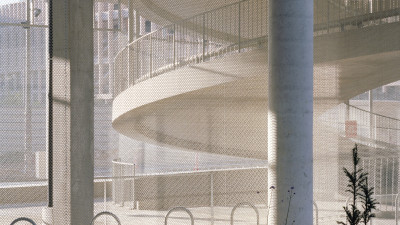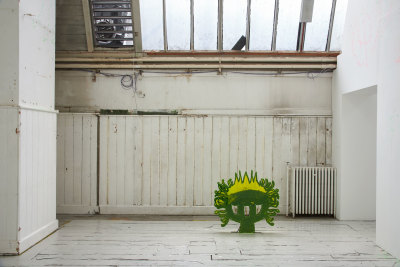Urban Jigsaw: filling in London’s missing pieces
Urban Jigsaw: filling in London’s missing pieces
By Owen Hopkins
Published 9 July 2015
As we launch an architectural ideas competition, our curator looks at the untapped potential of London’s underused land – and why the solution is not as simple as it seems.
-
This year saw London finally surpass its pre-war population peak. The metropolitan area of Greater London is now home to 8.6 million people, with little sign of the growth slowing down over the next few decades. The population increase has led to pressure from a number of quarters for London to be allowed to expand into areas currently protected by the Green Belt, with thoughts also turning to how to densify the suburbs. Yet even after the “Urban Renaissance” of the last thirty years, which revitalised the city centre – in part by redeveloping vast swathes of former industrial land – many brownfield sites still lie empty, unused and awaiting development.
In February 2015, the chancellor announced the creation of the London Land Commission, based at the GLA, whose mission is to identify “public sector brownfield land that is no longer needed in London, to help ensure that all of the capital’s brownfield sites are developed by 2025, and help meet its target of over 400,000 new homes by 2025.” According to Jonathan Seager, head of housing policy at London First, “it’s estimated that 40 per cent of brownfield land suitable for development in the country remains in public sector ownership.” For many the untapped potential of publicly-owned brownfield land is the answer to London’s housing crisis.
But such a blanket solution is far from straightforward, and largely overlooks the specifics of the size, location and surroundings of what is a patchwork of individual brownfield sites. It also ignores the obvious fact that if 40% of brownfield land is publicly owned, then the remaining 60% is in private ownership. Land-banking is a growing and much publicised trend, with developers often seeing better (and less risky) returns on land value increases than for actual development. Yet a big part of the problem is often the nature of brownfield sites themselves, which can be small or affected by practical or regulatory restrictions that make them difficult or risky to develop in conventional ways. Whatever the causes, the results of underdevelopment are usually the same, with brownfield sites becoming blights on an area, both visually and economically.
-
What we need is a new approach to brownfield sites, one that is creative, imaginative and, vitally, driven by research into the economy, demographics and the urban fabric of surrounding areas.
-
What we need therefore is a new approach to brownfield sites, one that is creative, imaginative and, vitally, driven by research into the economy, demographics and the urban fabric of surrounding areas. It is our contention that brownfield sites are very often the missing pieces of the urban jigsaw, whose thoughtful and strategic filling in and re-use can help bring places and communities together. This might be through a series of light-touch “tweaks”, or much larger scale development to provide something that an area needs, such as low-cost housing or an amenity. The Royal Academy Architecture programme is inviting architects to identify a particular brownfield site and propose an imaginative use that reflects the needs and potential of its surrounding areas.
Above all, this initiative is intended to make us look again at the potential of brownfield sites, and offer alternatives to the often default option of high density – and high cost – housing which offers little to the surrounding area.
Owen Hopkins is Architecture Programme Curator at the RA
-
Urban Jigsaw: Call for submissions
We’re inviting architects to select their own site and devise a brief based on what they believe to be the best use of the site, informed by research into the needs and potential of the local area. These could be obvious practical needs, such as housing, a park or space for businesses, or could be more conceptual: in terms of bolstering civic identity through a community space, public art commission or new institution. We are looking for thoughtful and original ideas that should be grounded in reality but need not be constrained by budget or feasibility, instead, showing what could be achieved by innovative ideas and approaches.



